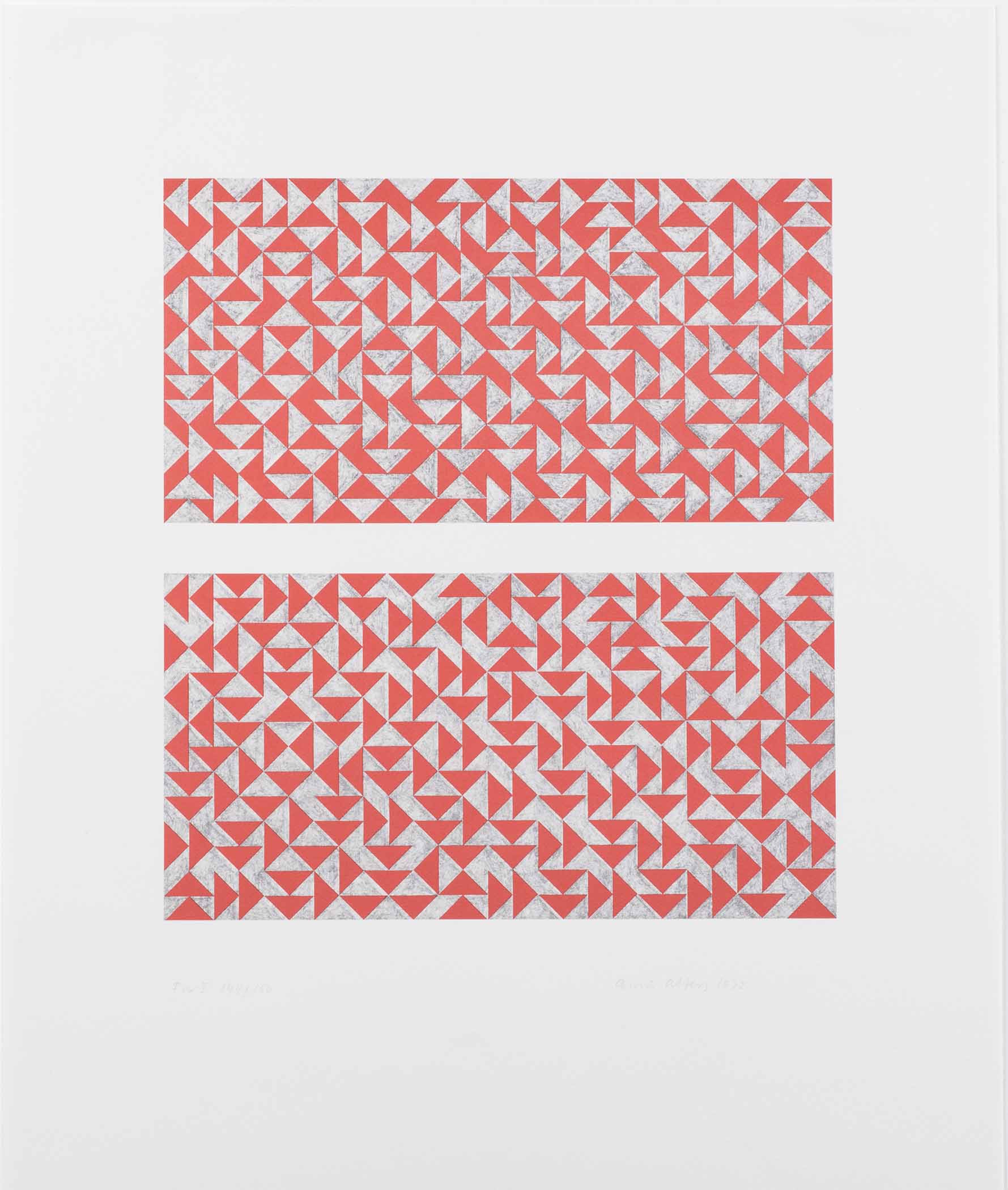
Fox I
Photo offset prints, 1972
Toledo Museum of Art, Gift of Mr. and Mrs. Sol Weber, Mr. and Mrs. Charles Platt, and Mr. and Mrs. Nicholas Fox Weber in memory of Dr. Daniel Kornblum, 1978.16–17
Anni Albers is known best for her woven textiles, but she devoted herself to printmaking beginning in the late 1960s. Her prints exhibit the same balance, order, and mathematical precision as her textiles. Weaving, which uses a simple system of intersecting perpendicular threads, shares similarities with computer programming’s binary system of ones and zeros that encode and transmit information. In the early 1800s, the Jacquard mechanized loom became one of the first machines to be programmed.
In Fox I and Fox II, sets of rectangles are composed of systematic triangle patterns arranged along a grid, similar to the grid of a loom. Fox I reverses the orange-and-white color pattern, with each panel the inverse of the other. The left panel of Fox II rotates the same pattern 90 degrees and superimposes it in black over gray against a white background. The negative space around the triangles creates the illusion of diagonal threads moving over and under the forms.
©2025 The Josef and Anni Albers Foundation / Artists Rights Society (ARS), New York